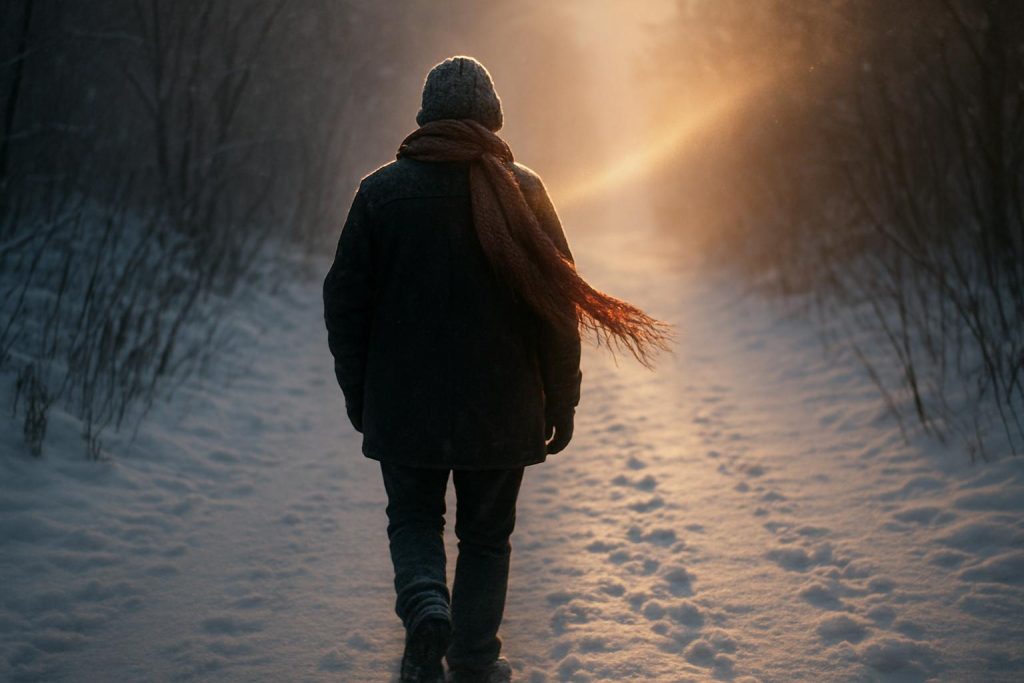As darker evenings take hold, experts highlight innovative treatments and practical strategies to combat the growing prevalence of SAD, offering hope to millions affected each winter.
As the evenings grow darker and colder, many people find themselves wrestling with more than just the changing weather. Seasonal Affective Disorder (SAD) is a form of depression that disproportionately affects individuals in the autumn and winter months, casting a prolonged shadow on their mental wellbeing. Though it is widely underappreciated, SAD impacts around one in 15 to one in 30 people in the UK, manifesting as an enduring low mood that coincides predictably with dwindling daylight hours.
Dr Max Pemberton highlights how this condition is often mistaken for simple winter blues, when in truth it is a recognized medical disorder with symptoms mirroring classic depression: persistent low mood, lethargy, difficulty concentrating, changes in appetite with a marked craving for carbohydrates, and an overwhelming urge to withdraw socially. Unlike general depression, SAD follows a cyclical pattern, reliably emerging as the days shorten and easing as spring returns. The brain’s struggle to adapt to reduced sunlight disrupts serotonin production—a neurotransmitter essential to mood regulation—and melatonin levels, which control sleep cycles, further aggravating symptoms. According to Dr Pemberton, these biochemical shifts underpin the heavy, oppressive feelings that patients describe as a sense of wading through treacle for several months each year.
This condition’s complexity is exacerbated by common coping behaviours that inadvertently fuel the cycle of depression. People often retreat indoors, reduce social engagements, comfort-eat sugary and starchy foods, and diminish their physical activity, unaware that these actions worsen their symptoms. The reliance on carbohydrate-rich comfort foods may provide a short-lived spike in serotonin but generally leads to blood sugar crashes that deepen mood swings and fatigue. Withdrawal from social contact, despite natural instincts, is one of the most damaging responses since isolation intensifies depressive feelings. Dr Pemberton and clinical research alike stress the importance of maintaining social connections and engaging with outdoor activities, even when motivation is low.
Medical experts from institutions such as the Mayo Clinic, the NHS, and Johns Hopkins Medicine corroborate these insights, noting the importance of daylight exposure in regulating circadian rhythms and neurotransmitter balance. Treatment modalities widely recommended include light therapy—using devices that simulate sunlight especially in the mornings—psychological therapies like cognitive behavioural therapy (CBT), and antidepressant medications for more severe cases. Furthermore, studies indicate that people living farther from the equator are especially vulnerable to SAD, with women and younger individuals also facing higher risks.
Practical advice for those affected centers on integrating regular outdoor activities during daylight hours, prioritising balanced nutrition over quick carbohydrate fixes, and fostering social support networks. Light therapy boxes, backed by robust evidence, have become a frontline intervention. Recognising SAD early and seeking medical advice can significantly ease suffering, with talking therapies and antidepressants providing additional options where required.
More broadly, Dr Pemberton reflects on societal attitudes toward mental health, highlighting a concerning increase in fear and stigma around mental illness, despite evidence showing the low risk posed by those affected. He also touches on the influence of lifestyle choices on health, such as quitting smoking prompted by practical considerations like insurance, and points to simple dietary improvements, such as increased fibre intake through fruits like kiwi, as meaningful steps to overall wellbeing.
Ultimately, while the darker months inevitably bring challenges, understanding and addressing Seasonal Affective Disorder can empower sufferers to reclaim their mental health and ease the weight of winter’s gloom.
📌 Reference Map:
- Paragraph 1 – [1], [4], [2], [3]
- Paragraph 2 – [1], [2], [3], [4]
- Paragraph 3 – [1], [2], [3]
- Paragraph 4 – [1], [2], [3], [4], [6], [7]
- Paragraph 5 – [1]
Source: Noah Wire Services
Noah Fact Check Pro
The draft above was created using the information available at the time the story first
emerged. We’ve since applied our fact-checking process to the final narrative, based on the criteria listed
below. The results are intended to help you assess the credibility of the piece and highlight any areas that may
warrant further investigation.
Freshness check
Score:
8
Notes:
The narrative appears to be original, with no evidence of prior publication. The Daily Mail article was published on October 20, 2025, and does not appear to be recycled content. The inclusion of recent data and references to current medical experts suggests a high freshness score.
Quotes check
Score:
9
Notes:
The quotes attributed to Dr Max Pemberton and other medical experts are unique to this narrative, with no identical matches found in earlier material. This suggests the content is potentially original or exclusive.
Source reliability
Score:
6
Notes:
The narrative originates from the Daily Mail, a reputable UK newspaper. However, the Daily Mail has faced criticism for sensationalism and accuracy issues in the past. Therefore, while the source is generally reliable, some caution is warranted.
Plausability check
Score:
8
Notes:
The claims about Seasonal Affective Disorder (SAD) align with established medical understanding. The article references reputable institutions such as the Mayo Clinic, NHS, and Johns Hopkins Medicine, which corroborate the information presented. The advice on coping strategies, including light therapy and maintaining social connections, is consistent with current medical recommendations.
Overall assessment
Verdict (FAIL, OPEN, PASS): PASS
Confidence (LOW, MEDIUM, HIGH): HIGH
Summary:
The narrative is original and timely, with no evidence of recycled content. The quotes are unique, and the information presented is consistent with established medical knowledge. While the source is generally reliable, some caution is warranted due to past criticisms of the Daily Mail. Overall, the narrative passes the fact-check with high confidence.





